Polycarbonate polishing can help engineer achieve high level of transparent and high-quality surface finishing. common ways for polycarbonate polishing include flame polishing, buffing polishing, vapor polishing, wet sanding.
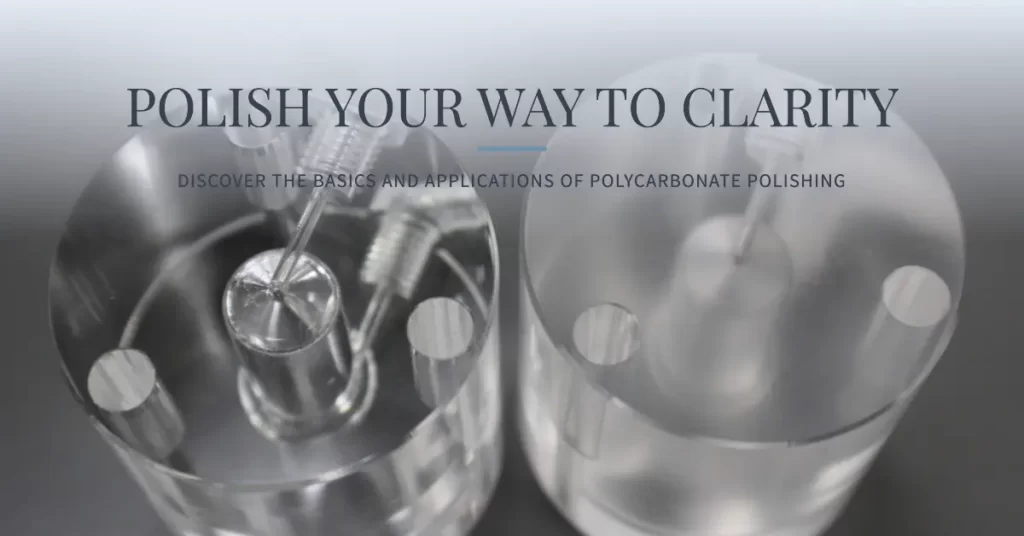
Polycarbonate attributes such as durability, clarity, and flexibility. These characteristics have led to its widespread usage in various industries, from eyewear to automotive. But while polycarbonate’s innate qualities make it a popular choice, achieving a flawless finish on it demands an extra layer of expertise: surface polishing. This process is pivotal in enhancing the performance and appearance of polycarbonate products.
In this article, we aim to provide insights not only about polycarbonate polishing, especially on the ‘what’ but also the ‘why’ and ‘how’ of this intricate process.
Understanding Plastic and Polycarbonate Polishing
When discussing material finishing, it is crucial to realize that polishing isn’t just about aesthetics. It plays a vital role in enhancing the functional properties of the material in question. But before diving into the details, it’s crucial to differentiate between the broader category of plastic polishing and the more specific niche of polycarbonate polishing.
What is Plastic Polishing?
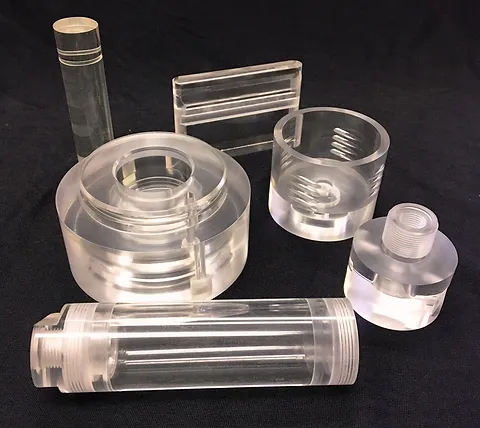
Plastic, given its diverse range, isn’t a one-size-fits-all when it comes to polishing. Plastic polishing is the method of refining a plastic surface to such an extent that it attains a smooth and shiny appearance. It’s about achieving a finish where the surface reflects light uniformly.
Polishing plastics involves various techniques, including buffing, wet sanding, and vapor polishing, tailored to each plastic’s unique properties. While aesthetic enhancement is an obvious advantage, polishing serves more functional purposes too. It improves clarity—crucial for transparent plastics—enhances the tactile feel of consumer products, and increases resistance to external elements by smoothing out surface imperfections
The Polycarbonate Polishing Instructions
Polycarbonate, due to its distinct properties, often demands a specialized approach. Before any polishing begins, the polycarbonate piece needs to be cleaned. This often involves removing any surface contaminants and ensuring the polycarbonate is free from dust or particles that can cause further scratches during surface polishing process.
Choosing the Method: Depending on the desired finish and the piece’s size, one can choose between flame polishing, buffing, vapor polishing, and wet sanding.
Table: Polycarbonate polishing methods
| Method | Best For | Considerations |
|---|---|---|
| Flame Polishing | Large, flat surfaces | Risk of warping |
| Buffing | Removing minor scratches | Requires buffing compound |
| Vapor Polishing | Detailed, intricate parts | Chemical safety considerations |
| Wet Sanding | Achieving ultra-smooth finishes | Time-intensive; multiple grits |
Post-Polishing Care: Once the polycarbonate is polished, ensure: Proper storage to avoid recontamination or scratching. If using chemicals, ensure they’re completely evaporated or cleaned off.
Polycarbonate Parts Suited for Polishing
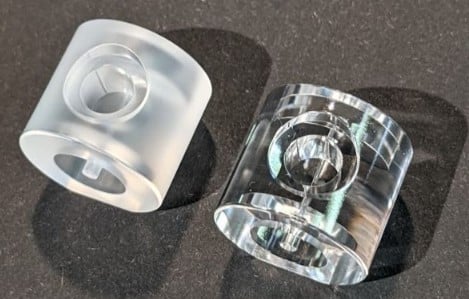
Non Polished polycarbonate parts Vs polycarbonate parts
Polycarbonate, known for its strength and clarity, is a material of choice in various applications. However, the versatility of this polymer means that not all polycarbonate parts are created equal. The need for polishing, and the type of polishing suitable, often depends on the specific application of the polycarbonate piece. Delving into the array of polycarbonate parts, we uncover which ones are ideally suited for polishing and why.
1. Optical and Visual Components

Given its inherent transparency and the potential to attain glass-like clarity through polishing, polycarbonate finds extensive use in optical applications.
- Eyewear Lenses: These require impeccable clarity. Scratches not only mar aesthetics but can distort vision.
- Camera Lenses: Even minute imperfections can affect image quality, making polishing essential.
- Optical Discs: CDs, DVDs, and Blu-Ray discs, often made of polycarbonate, need to be free of surface irregularities for efficient data reading.
For such applications, achieving a scratch-free, pristine surface is paramount. Vapor polishing and buffing are often employed here, given their ability to provide a uniform and clear finish.
2. Automotive Components
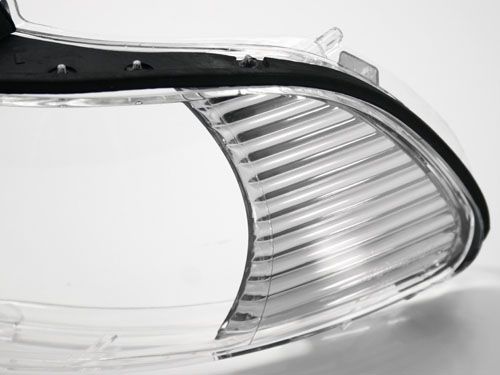
In the automobile industry, aesthetics meld with function. Polycarbonate parts here demand both resilience and polish.
- Headlamp Lenses: These not only have to be clear for optimal light transmission but also resilient to external factors like dirt and debris.
- Windshields and Windows: Especially in high-end or luxury vehicles, polycarbonate may replace traditional glass for its strength and lightweight properties. Polishing ensures clarity comparable to glass.
Buffing and flame polishing dominate in this sector, providing both clarity and the needed resilience against environmental conditions.
3. Consumer Electronics

With tech gadgets becoming extensions of personal style, their finish is more critical than ever. Polycarbonate parts in this realm include:
- Mobile Phone Screens: While tempered glass often covers the front, the back of phones, especially transparent or translucent ones, may use polished polycarbonate.
- Computer Components: Think of transparent CPU cases or LED panels that require a clear, glossy finish.
Vapor polishing is frequently employed for electronic components due to its precision and the ability to access intricate parts.
4. Architectural and Interior Elements
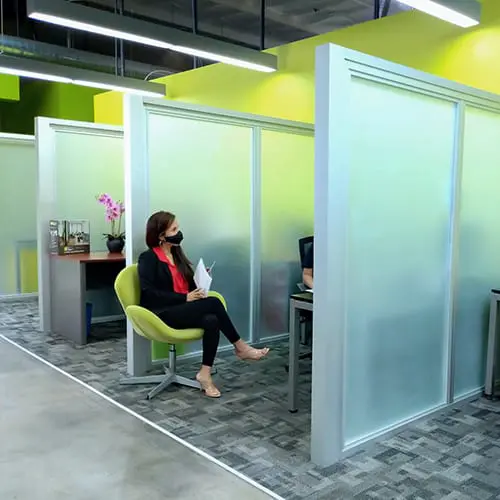
Modern architecture and interior design have embraced polycarbonate for its versatile properties.
- Stair Balustrades: These need to be both strong and clear, requiring a smooth, polished finish.
- Partitions and Panels: Especially in commercial spaces, polycarbonate panels can be both decorative and functional. A polished finish ensures they remain transparent or translucent, based on design needs.
Wet sanding, followed by buffing, is often the choice for these large surfaces, ensuring an even and aesthetically pleasing finish.
5. Medical Devices and Equipment
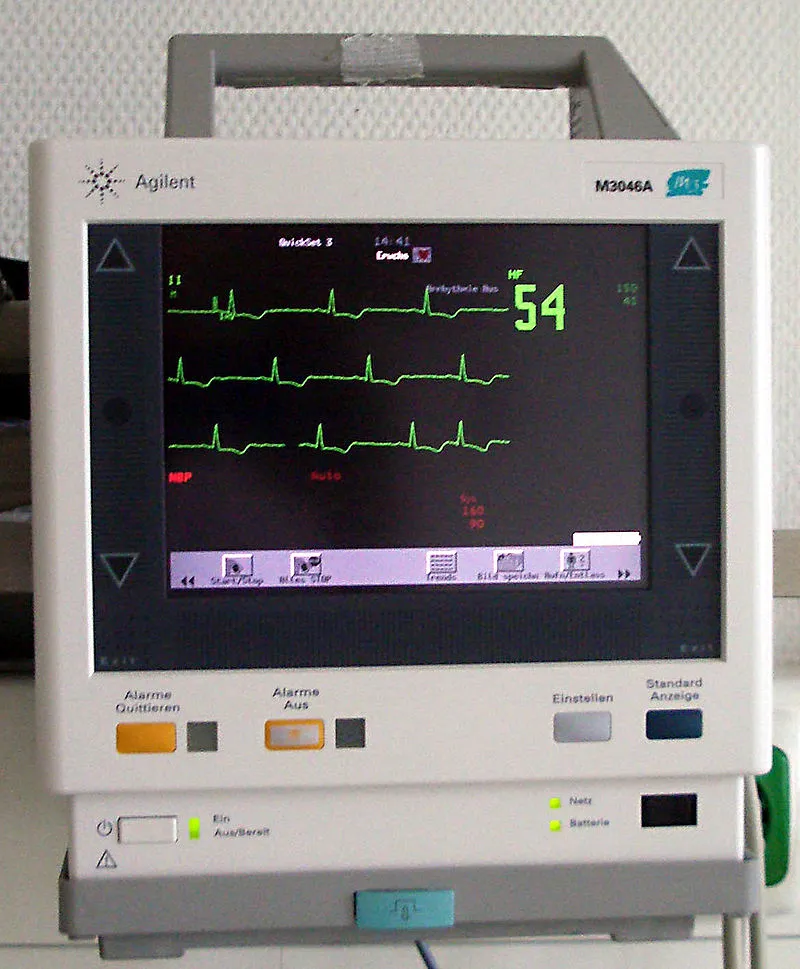
In the medical industry, clarity often translates to accuracy, especially for devices with visual components.
- Surgical Tools with Visual Elements: These tools, which doctors use for intricate procedures, often have tiny polycarbonate windows or lenses that require polishing.
- Medical Monitors and Displays: Here, clarity is crucial for accurate readings and diagnostics.
Given the stringent requirements of medical applications, vapor polishing is preferred. It provides a high level of clarity without introducing contaminants.
Types of Polycarbonate Polishing
Polycarbonate, known for its crystal clarity and impressive strength, is a preferred choice in many applications. However, achieving that perfect transparent finish often requires specialized polishing techniques. While the desired effect remains consistent – a smooth, clear surface – the journey to get there can be quite diverse. Let’s take a deep dive into the primary methods of polycarbonate polishing, their processes, advantages, and ideal applications.
1. Flame Polishing
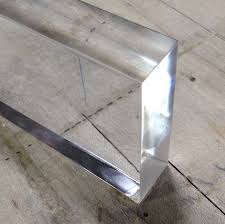
Flame polished polycarbonate
The process of flame polishing is aptly named, given it employs a controlled flame to refine and enhance the look of polycarbonate surfaces.
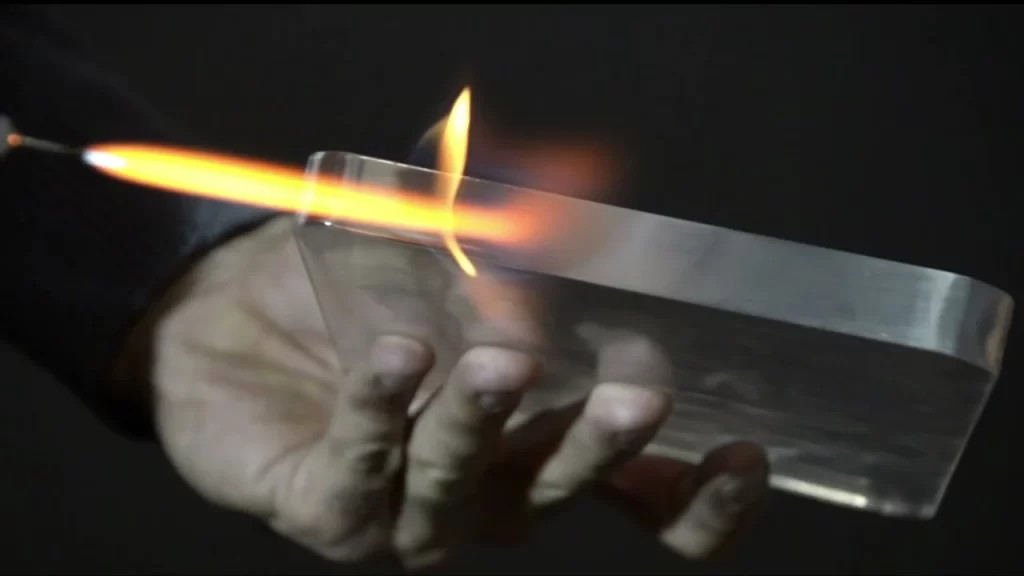
- Process: By skillfully maneuvering a hot, oxidizing flame across the polycarbonate, the surface momentarily melts. As it returns to its solid state, a shiny and glossy texture emerges.
- Advantages: Its swift approach makes it perfect for projects demanding high volume. With minimalistic equipment requirements, this method is economically viable and can mimic the gleam of glass.
- Considerations: Due to the melting risk, detailed or intricate parts might not be the best fit. Expertise is a prerequisite to ensure uniformity and sidestep any potential burns.
- Typical Applications: It’s commonly sought after for vast, uninterrupted surfaces, such as exhibition panels or expansive architectural elements.
2. Buffing Polishing
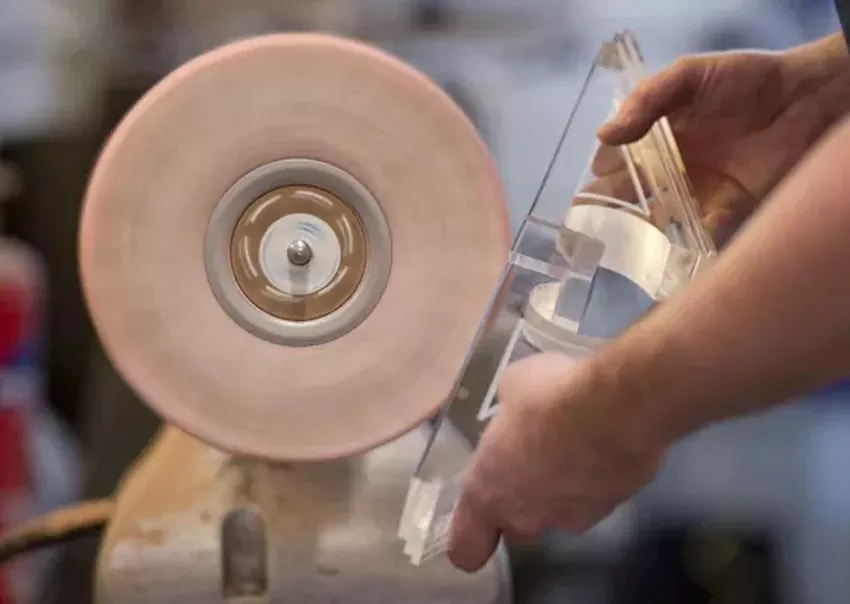
Buffing polishing renowned as a time-honored polishing method, buffing incorporates a spinning cloth wheel and specific polishing mediums.
- Process: The polycarbonate object interacts with a fast-spinning buffing disc. To accentuate its shine, compounds, often resembling a paste or solid bar, play a crucial role.
- Advantages:
- Its adaptability caters to diverse shapes and magnitudes.
- It consistently produces a radiant, mirror-like finish.
- Detailed parts benefit from its precision polishing capabilities.
- Considerations:
- It can be more time-intensive compared to methods like flame polishing.
- The selection of the compound is pivotal; missteps could introduce haziness or scrapes.
- Typical Applications: Items like eyeglass lenses, petite ornamental pieces, and detailed machinery components are frequently polished this way.
3. Vapor Polishing
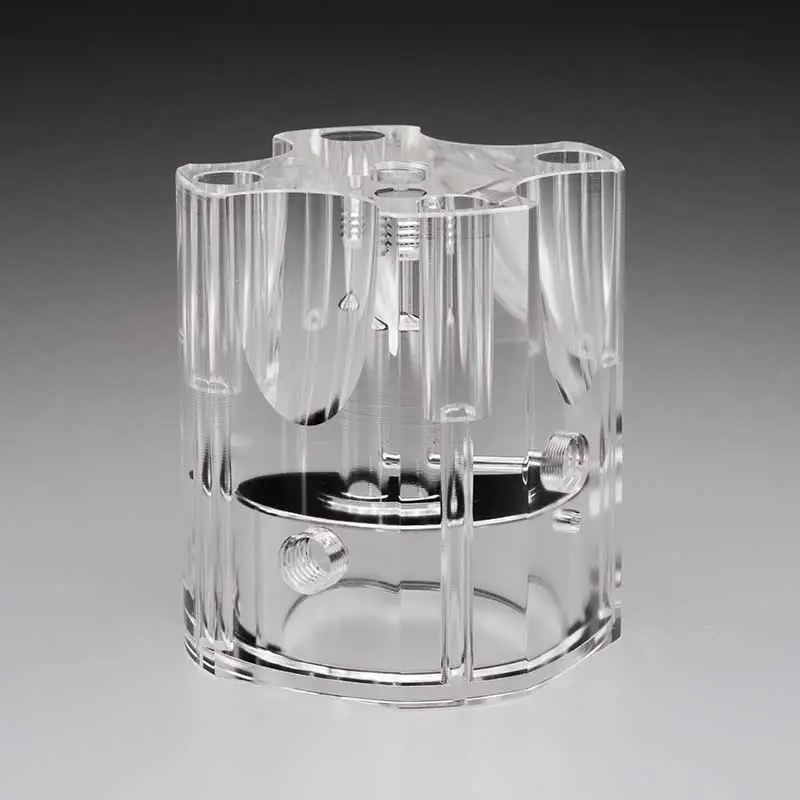
Vapor polishing emerges as an advanced method, where chemical fumes refine polycarbonate items, bestowing them with a crystal-clear finish.
- Process: Subjecting the polycarbonate component to vapors from solvents, often dichloromethane or chloroform, results in a brief surface softening. This action enables minuscule rough spots to even out seamlessly.
- Advantages:
- The outcome? A spectacularly lucid, shiny finish.
- The method’s intricacy is unmatched, even refining detailed parts since the vapor navigates constricted areas effortlessly.
- Its residue-free nature aligns with applications demanding precision.
- Considerations:
- The method mandates a regulated environment due to the potential perils of solvent fumes.
- Thicker components might not benefit as much since the refinement remains superficial.
- Typical Applications: It’s the go-to for sectors like medical apparatus, optical instruments, and luxury electronic gadgets.
4. Wet Sanding
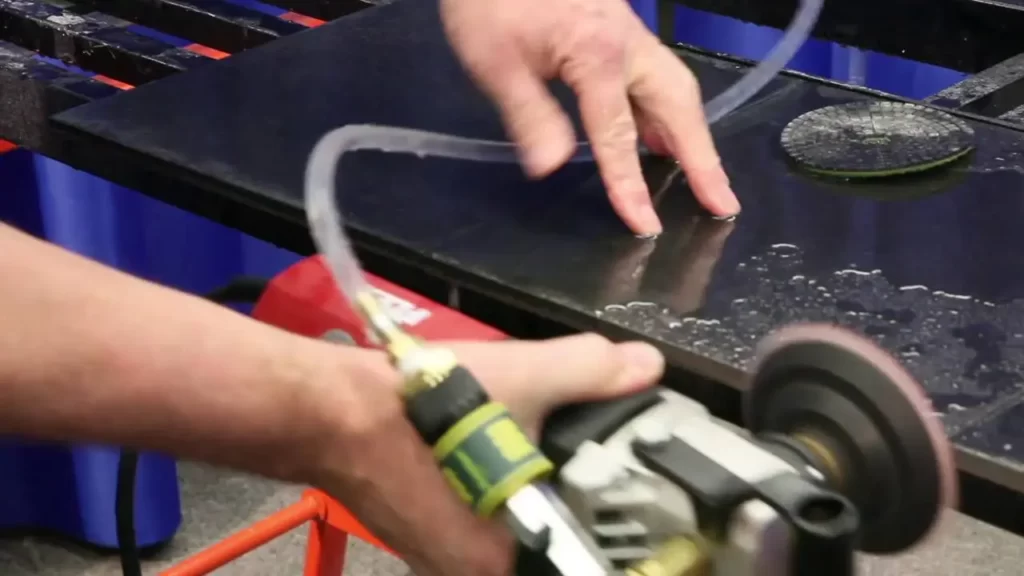
Often laying the groundwork for other refinement methods, wet sanding employs sandpaper of varying coarseness, combined with water, to enhance polycarbonate surfaces.
- Process: The journey commences with a rougher sandpaper grade, methodically refining the surface under a consistent water layer. As one progresses, finer grades are introduced until the zenith of smoothness graces the surface.
- Advantages:
- Excellently eliminates pronounced scratches and imperfections.
- Sets the stage for follow-up polishing techniques.
- The technique can be manual or machine-assisted.
- Considerations:
- It’s a step-by-step method, generally more time-consuming.
- Continuous water rinsing is integral to clear the eroded material and dodge potential abrasions.
- Typical Applications: Sectors like vehicle components, building elements, and as a foundational step for other polishing methods often resort to wet sanding.
Try Prolean Now!
Benefits of Polycarbonate Polishing
Polycarbonate, due to its exceptional clarity and robustness, finds widespread usage in various industries. From eyewear to automotive parts, this plastic variant is versatile. But to leverage its true potential, polishing becomes a requisite. Below, we traverse the numerous benefits of polycarbonate polishing and why it’s a non-negotiable step for many applications.
1. Enhanced Optical Clarity
Polycarbonate inherently possesses clarity. However, during fabrication, some imperfections might creep in. Polishing effectively tackles these, ensuring products like eyeglasses or camera covers provide unobstructed views. This refinement is crucial for optical devices, camera lenses, eyewear, and light covers.
2. Augmented Aesthetic Appeal
A glossy finish derived from polishing doesn’t just enhance the look of polycarbonate; it also magnetizes consumers, making the products visually irresistible. This not only accentuates the product’s aesthetics but also signifies its quality, giving businesses a strategic edge to peg their products at a premium. Such enhancement is often discernible in display covers, decorative items, high-end consumer electronics, and parts of automobiles.
3. Surface Smoothness and Hygiene
Beyond visual charm, polishing gifts polycarbonate surfaces with tangible smoothness, accentuating the overall user experience. This smoothness plays another pivotal role: hygiene. It’s harder for dust and microbes to cling onto such surfaces, a characteristic indispensable for tools and devices in the medical realm. This polishing advantage profoundly impacts medical devices, food storage solutions, touch interfaces, and wearable products.
4. Improved Wear Resistance
A surface refined through polishing naturally offers reduced friction, particularly when interacting with other materials. This minimization of friction-induced wear indirectly promises a longer life for the product, translating to a more cost-effective solution for end-users. Such wear-resistant benefits predominantly serve moving machinery parts, gear systems, rollers, and other applications involving regular material interactions.
5. Enhanced Light Transmission
For certain applications, the transmission of light is paramount. A polished polycarbonate surface guarantees optimal light permeation. Not only does this facilitate better illumination, but it also potentially curtails energy consumption, especially in scenarios where achieving the brightest luminance with the least energy is the goal. This polishing boon is most evident in light fixtures, LED light covers, transparent roofing systems, and greenhouses.
6. Reduction of Microscopic Defects
At a microscopic level, the surface might harbor defects, potentially jeopardizing the structural or functional aspects of a polycarbonate item. Polishing can meticulously smoothen out these minor imperfections, bolstering the reliability of the product. Such a meticulous refining process is especially vital for aerospace components, protective equipment, and machinery demanding high precision.
Factors to Consider in Polycarbonate Polishing
Polycarbonate polishing is the best way to ensure clarity and finish. But, like every other industrial process, it demands precision, knowledge, and an understanding of multiple variables. Here, are the key factors to consider while undertaking polycarbonate polishing, ensuring that the end product is nothing short of perfection.
1. Type of Polycarbonate Material
Standard Polycarbonate: The most common type, requiring a standardized polishing process.
Polycarbonate with Additives: These might include UV stabilizers or flame retardants, potentially affecting the polishing process.
Composite Materials: Polycarbonates combined with other plastics or fibers may necessitate unique polishing methods.
2. Desired Finish
Mirror Finish: This demands an extremely refined polishing process, often involving multiple stages.
Matte Finish: Achieved through specific abrasives or techniques, ensuring a non-reflective but smooth surface.
Textured Finish: Here, the goal isn’t smoothness but a specific texture, often requiring specialized equipment.
3. Thickness of the Polycarbonate
Thin Sheets: Highly susceptible to warping or damage, requiring delicate polishing.
Thick Blocks: These can endure more rigorous polishing processes, but the heat generated needs monitoring.
4. Polishing Equipment and Technique
Manual vs. Automated: Manual polishing offers more control, while automated processes ensure consistency across large batches.
Equipment Calibration: The machinery used should be periodically calibrated to maintain polishing precision.
Choice of Abrasives: The granularity and type of abrasive play pivotal roles in the outcome.
5. Environmental Conditions
Ambient Temperature: This can influence the polycarbonate’s behavior during polishing.
Humidity: Excess moisture can affect the polishing finish, especially if vapor polishing is being used.
Dust and Contaminants: A clean environment is imperative to avoid inclusions or imperfections in the polished surface.
6. Post-Polishing Treatment
Cleaning: Any residues from the polishing compounds need thorough removal.
Protection: Using protective films can prevent scratches or damage post-polishing.
Inspection: A quality check ensures the desired finish and clarity have been achieved.
Read more: What is Electropolishing? A Detailed Explanation
Conclusion
Polishing is a very common way to achieve transparent and high-quality surface finishing on the surface of plastics, especially polycarbonate. By understanding and optimizing every phase of this process, industry players can unlock the full potential of polycarbonate, showcasing its beauty and functionality. Whether it’s the pristine clarity of eyeglass lenses, the flawless finish on a vehicle’s headlamp, or the gleaming surface of architectural installations, polished polycarbonate invariably elevates the end product’s aesthetic and practical appeal.
However, achieving such perfection isn’t a happenstance. It demands a keen knowledge of the material, an understanding of the environmental variables, and the application of advanced polishing techniques. As we’ve delved deep into the subject, it’s evident that polishing isn’t merely a final touch but a crucial step that warrants careful consideration and execution.
FAQs
What is the difference between plastic polishing and polycarbonate polishing?
Plastic polishing refers to a general polishing process for all types of plastics. Polycarbonate polishing is specific to polycarbonate parts.
Can all polycarbonate parts be polished?
Most can, but the choice often depends on the part’s function and desired properties.
Is flame polishing safe for all polycarbonate parts?
No, flame polishing requires expertise and may not be suited for all types of parts due to potential warping.
How does polishing enhance the durability of a polycarbonate part?
A smoother surface is less prone to dirt accumulation, and minor surface imperfections, which can be initiation sites for cracks, are removed.
Where are polished polycarbonate parts commonly used?
They find applications in optical devices, automotive components, electronics, safety equipment, and architecture.
Why choose Prolean’s Plastic Polishing Services?
Prolean offers industry-leading expertise and state-of-the-art technology, ensuring every polished part meets the highest standards.



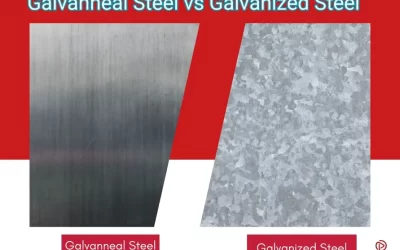
0 Comments